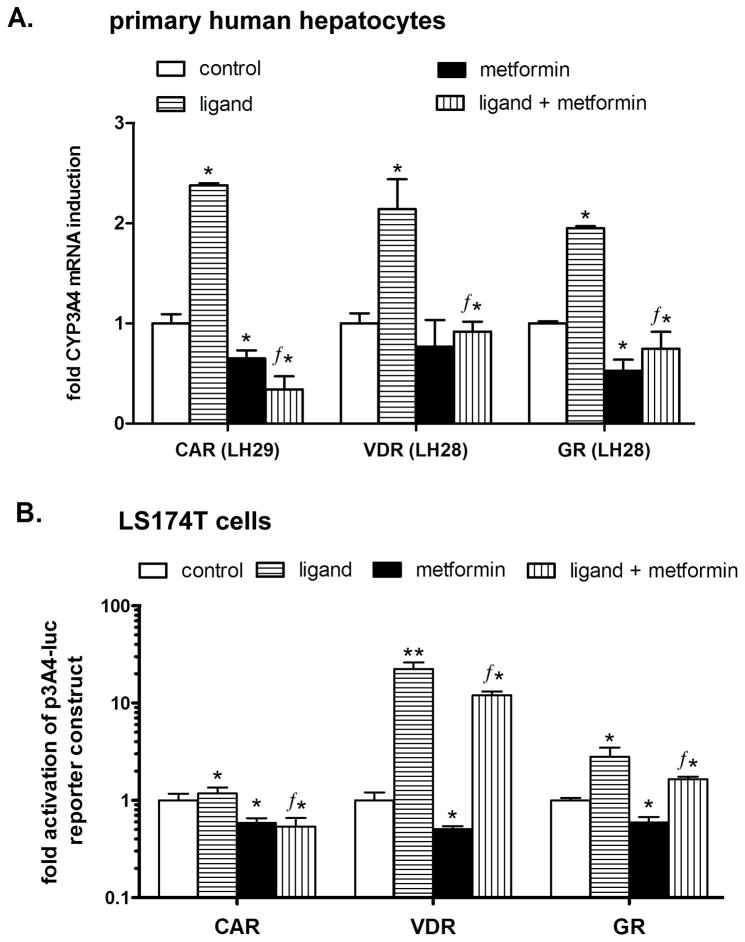Fig. 7. Metformin suppresses CAR-, VDR- and GR-mediated up-regulation of CYP3A4 mRNA in primary human hepatocytes and in a luciferase gene reporter assay.
(A) Primary human hepatocyte preparations LH28 and LH29 were treated with metformin (2 mM) and prototypical ligands of the tested nuclear receptors 1,25OHvitD3 (10 nM, a VDR receptor ligand), CITCO (1 μM, CAR ligand), dexamethasone (100 nM, GR ligand), or their combination with metformin for 24 h. After incubation, cells were lysed and analyzed for CYP3A4 mRNA expression levels normalized to the housekeeping HPRT mRNA level as measured by qRT-PCR. (B) The transient transfection assay was performed in LS174T cells transfected with the p3A4-luc reporter construct (150 ng per well in 48-well plate) and 100 ng of the expression construct (VDR, CAR or GR) together with the OCT1 expression plasmid (50 ng). LS174T cells were treated with metformin (2 mM) and the prototypical ligands 1,25OHvitD3 (10 nM), CITCO (1 μM), or dexamethasone (100 nM) or their combination with metformin for 24 h. Data represent the means of three independent experiments and are shown as the fold activation of normalized luciferase activity relative to the solvent (0.1% DMSO) controls. ƒp<0.05 indicates a statistically significant effect compared to the effects of the prototypical ligand (Student's unpaired t-test); *p<0.05 indicates a statistically significant effect compared to vehicle-treated cells (ANOVA with Dunnett’s posthoc test).

